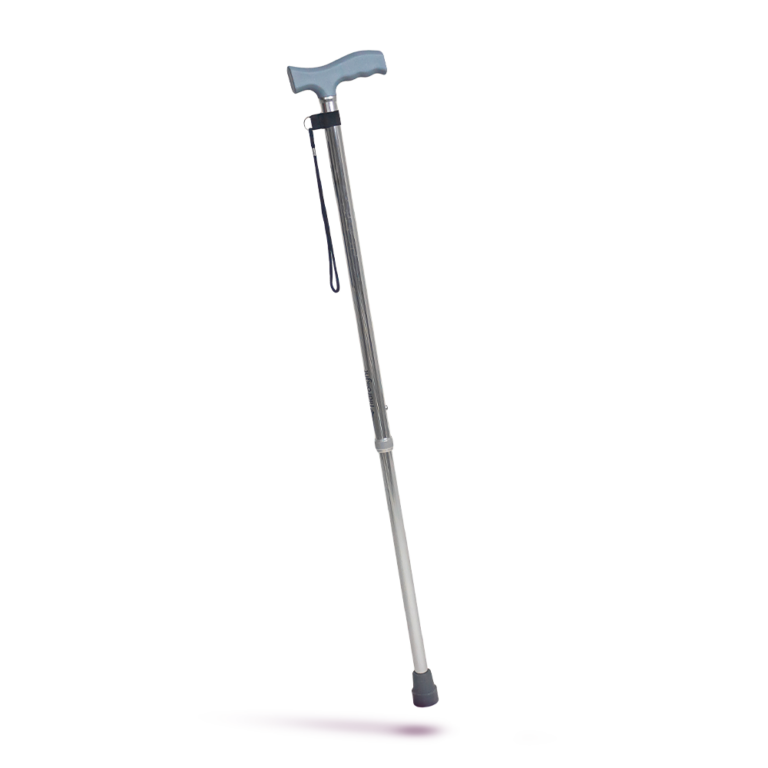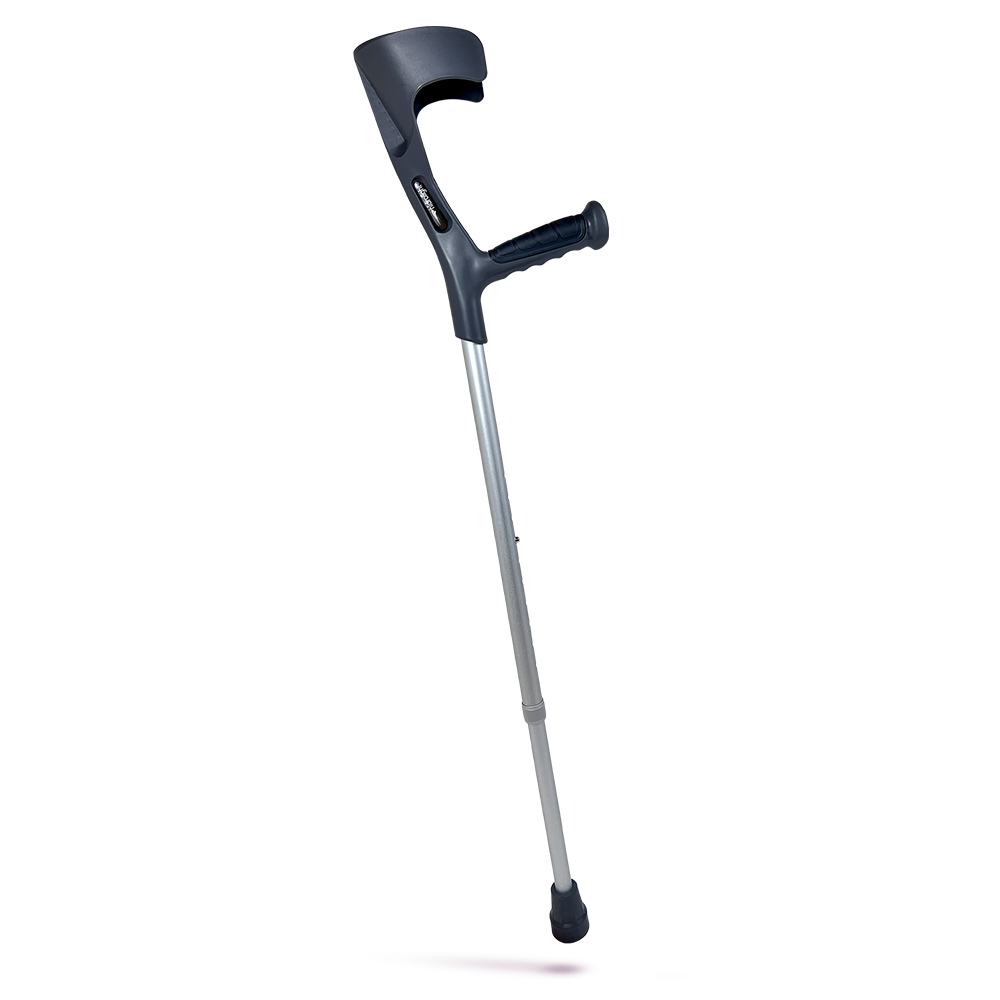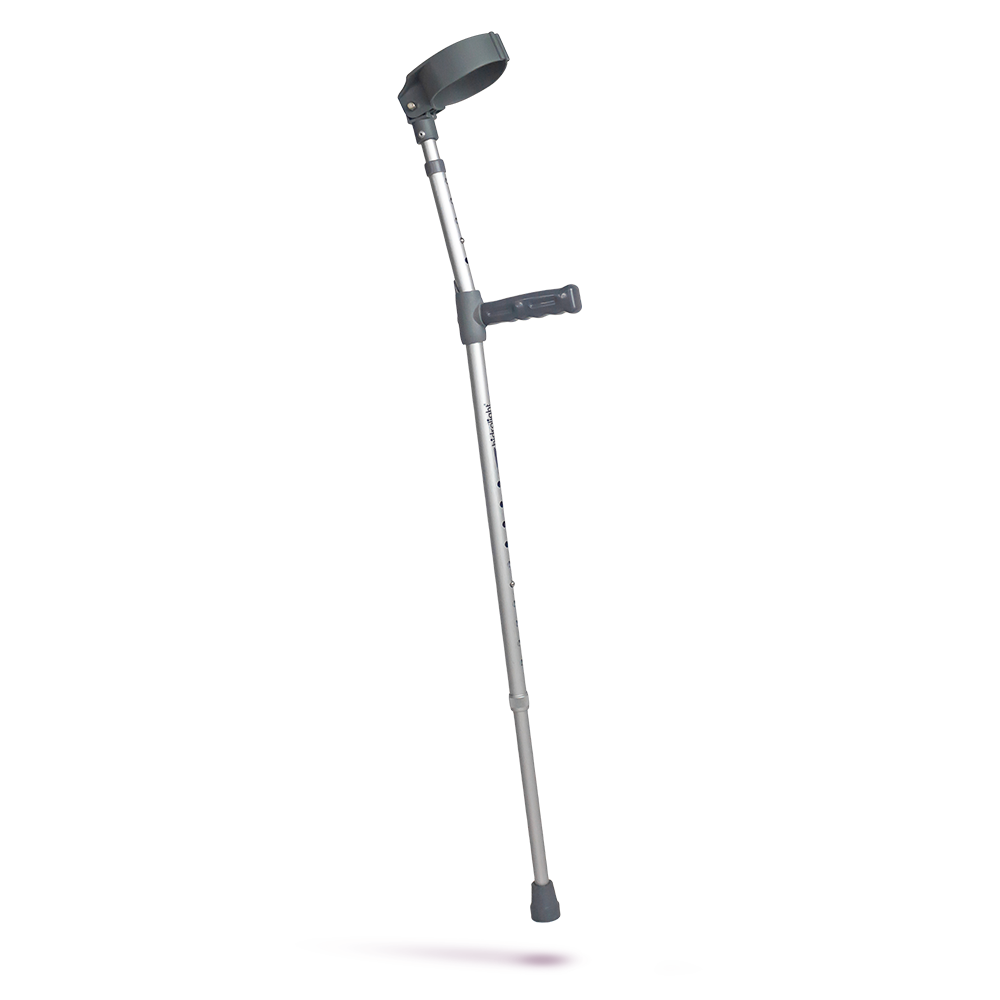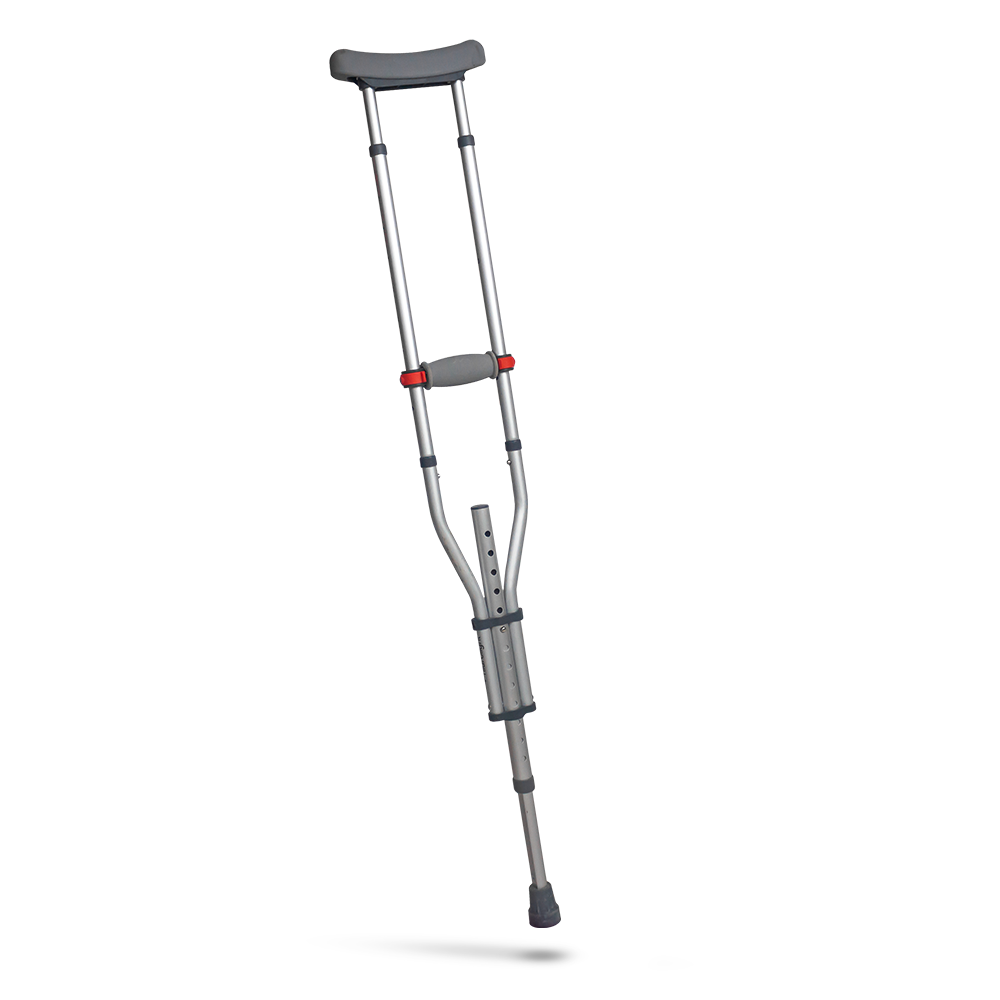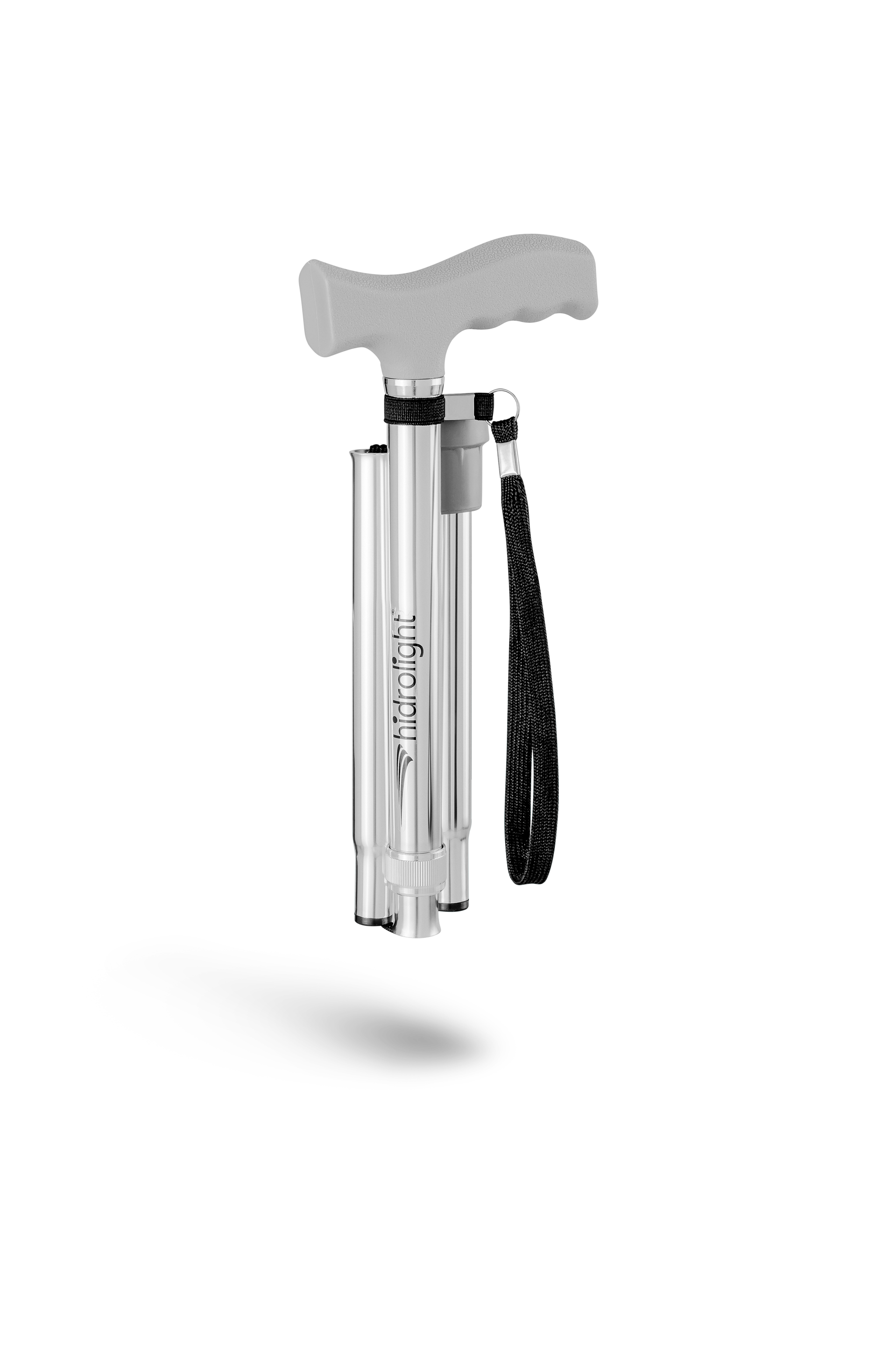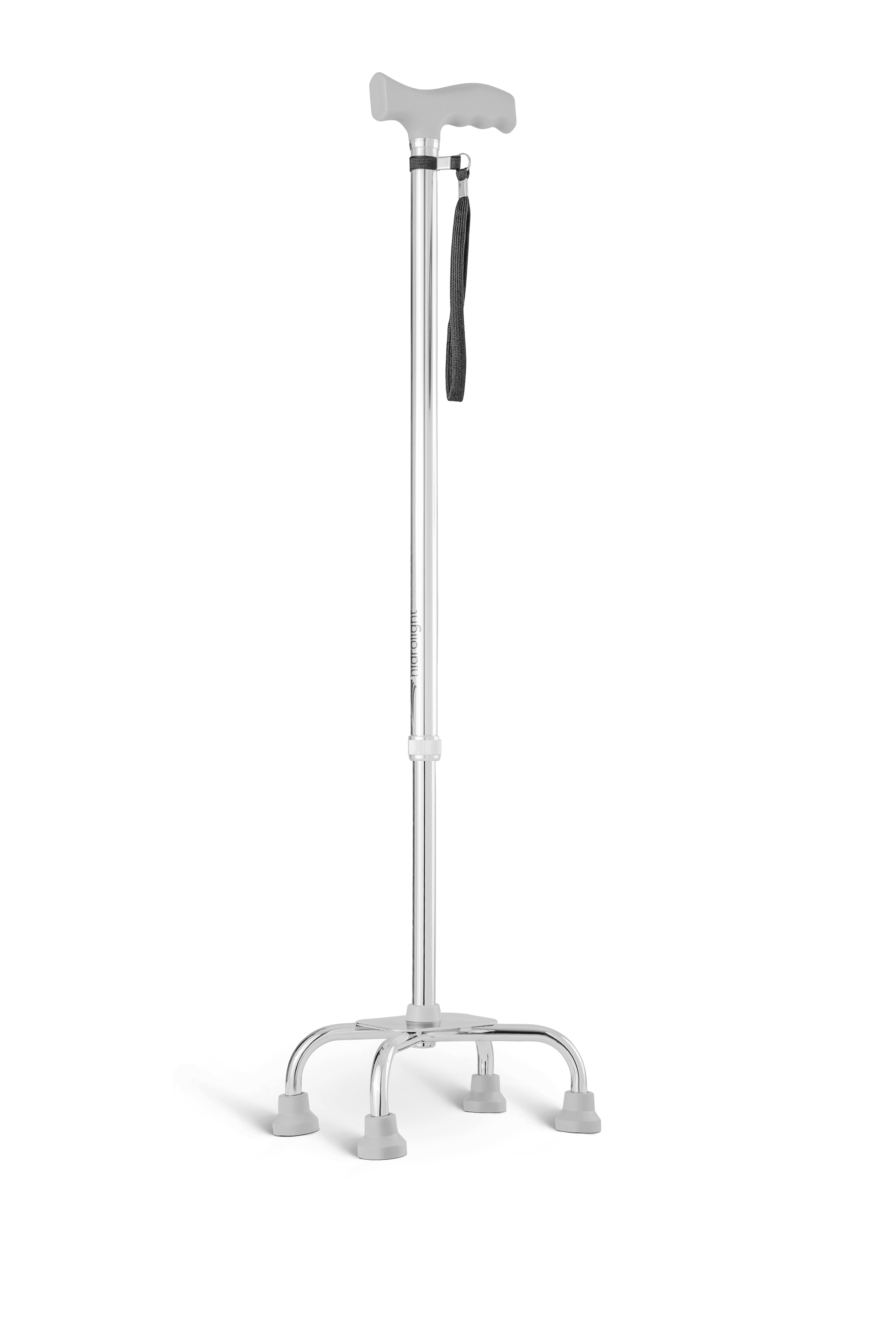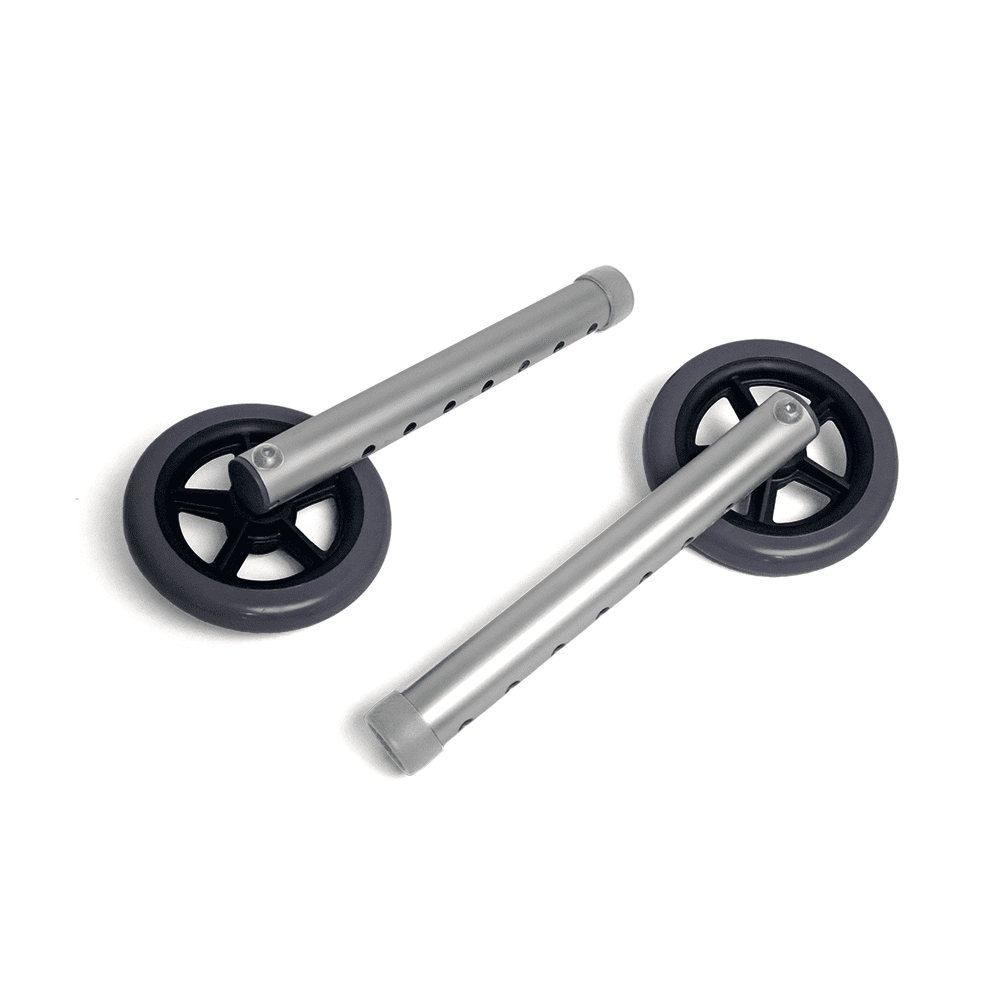Product details
Walking
Hold the cane with the hand opposite the weaker lower limb. To walk, move your strongest leg forward. Your heel should be a little beyond the tip of the stick. Then move the cane and the weaker limb simultaneously. Repeat the steps.
Sit down
Turn your back to the chair and approach so that you feel the chair on the back of your lower limbs. Make sure the chair is sturdy and won’t slide back when you sit down. Rest your cane. Grasp the chair firmly with both hands and slowly lower yourself into the seat.
Standing
Tilt your torso forward, push the chair down and push with your strongest leg to stand up. Hold the cane with the hand opposite the weaker lower limb.
Climbing stairs
To climb stairs, hold onto the handrail (if possible) and climb with your stronger leg first, with the cane in the hand opposite the injured leg. Then step on the weaker leg.
Going down stairs
To go down the stairs, place the cane on the step, support the weaker lower limb and then support the other lower limb, which will bear the weight of the body.
Hold the cane with the hand opposite the weaker lower limb. To walk, move your strongest leg forward. Your heel should be a little beyond the tip of the stick. Then move the cane and the weaker limb simultaneously. Repeat the steps.
Sit down
Turn your back to the chair and approach so that you feel the chair on the back of your lower limbs. Make sure the chair is sturdy and won’t slide back when you sit down. Rest your cane. Grasp the chair firmly with both hands and slowly lower yourself into the seat.
Standing
Tilt your torso forward, push the chair down and push with your strongest leg to stand up. Hold the cane with the hand opposite the weaker lower limb.
Climbing stairs
To climb stairs, hold onto the handrail (if possible) and climb with your stronger leg first, with the cane in the hand opposite the injured leg. Then step on the weaker leg.
Going down stairs
To go down the stairs, place the cane on the step, support the weaker lower limb and then support the other lower limb, which will bear the weight of the body.
Aluminum tube, polypropylene and rubber fittings
3 (three) months after purchase, on presentation of the sales invoice at the place of purchase, excluding cases of improper use of the product.
Always check that the tips, pins and push buttons are properly fitted and secure. Always replace the tips when they become worn to prevent accidents. Pay close attention to possible obstacles that could cause you to lose your balance and fall (e.g. rugs, coffee tables, slippery or wet floors, pets, etc.). SEEK MEDICAL ADVICE.
Indefinite
Keep in a place protected from rain, humidity and direct light. Preferably store the product in its original packaging.
Use a damp cloth. Do not use bleach or abrasive products. Wipe with a dry cloth to finish.
100 kg
Stella Lima San Martins
188950-F
8.07.582-1
80758210058
CHINA
7908192706522
walking cane t-type
SC500A
Walking sticks are used to increase the base of support, improving balance and facilitating walking. They also serve to reduce joint compression and overload in the lower limb.
Single
Product details
Walking
Hold the cane with the hand opposite the weaker lower limb. To walk, move your strongest leg forward. Your heel should be a little beyond the tip of the stick. Then move the cane and the weaker limb simultaneously. Repeat the steps.
Sit down
Turn your back to the chair and approach so that you feel the chair on the back of your lower limbs. Make sure the chair is sturdy and won’t slide back when you sit down. Rest your cane. Grasp the chair firmly with both hands and slowly lower yourself into the seat.
Standing
Tilt your torso forward, push the chair down and push with your strongest leg to stand up. Hold the cane with the hand opposite the weaker lower limb.
Climbing stairs
To climb stairs, hold onto the handrail (if possible) and climb with your stronger leg first, with the cane in the hand opposite the injured leg. Then step on the weaker leg.
Going down stairs
To go down the stairs, place the cane on the step, support the weaker lower limb and then support the other lower limb, which will bear the weight of the body.
Hold the cane with the hand opposite the weaker lower limb. To walk, move your strongest leg forward. Your heel should be a little beyond the tip of the stick. Then move the cane and the weaker limb simultaneously. Repeat the steps.
Sit down
Turn your back to the chair and approach so that you feel the chair on the back of your lower limbs. Make sure the chair is sturdy and won’t slide back when you sit down. Rest your cane. Grasp the chair firmly with both hands and slowly lower yourself into the seat.
Standing
Tilt your torso forward, push the chair down and push with your strongest leg to stand up. Hold the cane with the hand opposite the weaker lower limb.
Climbing stairs
To climb stairs, hold onto the handrail (if possible) and climb with your stronger leg first, with the cane in the hand opposite the injured leg. Then step on the weaker leg.
Going down stairs
To go down the stairs, place the cane on the step, support the weaker lower limb and then support the other lower limb, which will bear the weight of the body.
Aluminum tube, polypropylene and rubber fittings
3 (three) months after purchase, on presentation of the sales invoice at the place of purchase, excluding cases of improper use of the product.
Always check that the tips, pins and push buttons are properly fitted and secure. Always replace the tips when they become worn to prevent accidents. Pay close attention to possible obstacles that could cause you to lose your balance and fall (e.g. rugs, coffee tables, slippery or wet floors, pets, etc.). SEEK MEDICAL ADVICE.
Indefinite
Keep in a place protected from rain, humidity and direct light. Preferably store the product in its original packaging.
Use a damp cloth. Do not use bleach or abrasive products. Wipe with a dry cloth to finish.
100 kg
Stella Lima San Martins
188950-F
8.07.582-1
80758210058
CHINA
7908192706522
